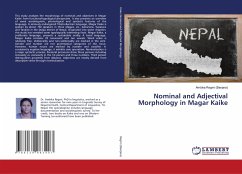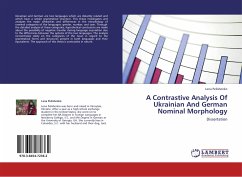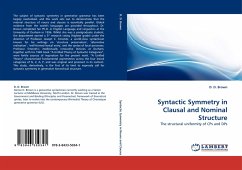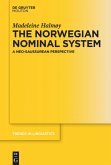This study analyzes the morphology of nominals and adjectives in Magar Kaike from functional-typological perspective. It also presents an overview of some sociolinguistic, phonological and syntactic features of the language. A seriously endangered Tibeto-Burman language, Magar Kaike is spoken by about 792 speakers in three villages, viz., Sahartara, Tupatara and Tarakot in the Dolpa district of Nepal. Organized into seven chapters, this study has revealed some typologically interesting facts. Magar Kaike, a preliterate language, presents a sustainable orality. A tonal language, Magar Kaike contains 29 consonant and ten vowels. Word order is relatively free. Volitionality and non-volitionality are marked in the verb. Gender and number are not grammatical categories of the noun. However, human nouns are marked by number and classifier. A consistently ergative language, it exhibits case syncretism. Nominalization is a major syntactic process. Personal pronouns show three persons including inclusivity vs. exclusivity in the 1st person and three numbers. Third person distinguishes proximity from distance. Adjectives are mostly derived from descriptive verbs through nominalization.
Bitte wählen Sie Ihr Anliegen aus.
Rechnungen
Retourenschein anfordern
Bestellstatus
Storno








